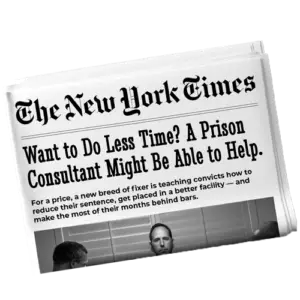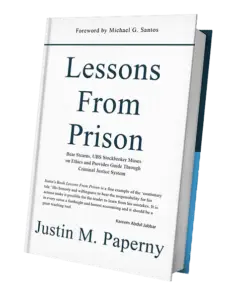(Click the Play button above to listen to the whole podcast)
I’ve decided to dedicate this blog in our post-sentencing series to what I call the quadrant theory, but before I explain that, I want to tell you about a conversation I had with my mentor, Michael Santos. I bring him up often for a reason—he’s the one who taught me lessons that carried me through prison and that I still use today.
When Michael was inside, starting back in 1987, he got off to a deliberate start. He educated himself, wrote every day, earned degrees, built relationships with mentors. And he broke his time into minutes. He told me once, “You have 1,440 minutes in a day. Sleep takes about 440. That leaves you with 1,000. What will you do with those 1,000 minutes?”
That question forced me to see how careless I was with my own time. If I wanted to write, to speak, to guide others, it wasn’t going to happen by accident. I had to use those 1,000 minutes every day to build toward it.
Michael also taught me to measure those minutes through the quadrant theory: high risk/low reward, low risk/low reward, high risk/high reward, and low risk/high reward. Everything you do inside falls into one of those quadrants.
High risk/low reward? Smuggling in a phone, skipping your job, wandering into a dorm you don’t belong in. The risk is huge—disciplinary shots, transfers, lost good time—for nothing in return.
Low risk/low reward? Hiding in your cubicle, sitting in front of the TV, walking endless laps talking about the life you used to have. Safe, yes, but nothing to show for it. That’s coasting.
High risk/high reward? Documenting your journey. Writing blogs or letters home. Sharing reflections. It forces you to stretch because eventually you run out of things to say unless you’re learning. It carries risk—staff may read it, you might not follow through—but the upside is enormous. It builds a record of growth.
Low risk/high reward? Reading with purpose. There’s no downside to choosing the right books. The upside is knowledge, discipline, and credibility. It’s even better when you share what you learn with your family.
That’s why those 1,000 minutes matter so much. If you don’t use them deliberately, they disappear. If you tell yourself you’ll get serious later, you’ve already lost. You’ll fill your days with what looks easy and safe—pickleball tournaments, idle talk, the bare minimum at your prison job. I’ve said before, unless you’re planning to be a professional pickleball player, that’s not a great use of your time. In prison, where healthcare is terrible, an injury can follow you forever.
Families notice how you spend your minutes. I get calls from people frustrated that their loved one comes home miserable and unprepared. When we trace it back, the story is always the same: they didn’t use their minutes, they coasted, they gave the impression that prison was a place to sit out time, not to build.
I’m 50 now, home 16 years, and I still use the quadrant theory every day. I still think about how I’m spending those 1,000 minutes, and I still make decisions determined to prove I’ve learned from what led me inside.
That’s what I want for you. Don’t waste your 1,000 minutes. Use them with intention. Because how you spend those minutes will decide what your life looks like after prison.
Justin Paperny



